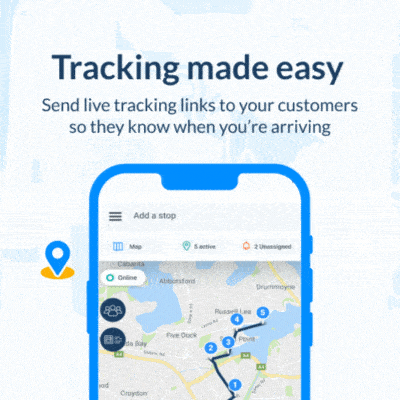Cruise, the autonomous vehicle subsidiary under the General Motors umbrella, has announced its robotaxi expansion into Seattle and Washington, DC territories. This expansion comes at a strange time, particularly in light of recent operational challenges faced in San Francisco.
In this initial phase of expansion, Cruise will do manual data collection. This involves deploying robotaxis to navigate the street and gathering vital information about the local driving conditions and meteorological nuances. Following this, the company will proceed with a comprehensive mapping of these two urban centers.
Timing is everything
Cruise’s decision to expand comes at a pivotal juncture, with mounting scrutiny in its hometown of San Francisco.
In mid-August, Cruise, along with rival Waymo, a subsidiary of Alphabet, received regulatory approval from California authorities to extend their fully autonomous commercial robotaxi services throughout San Francisco.
However, the ensuing week was muddied by a series of incidents involving Cruise vehicles. These included instances of ten robotaxis causing traffic gridlock, an incident where a vehicle inadvertently drove into freshly poured cement, and a collision with a fire truck, resulting in passenger injuries.
Consequently, the California Department of Motor Vehicles called upon Cruise to promptly reduce its robotaxi fleet in San Francisco by 50%, pending an ongoing investigation into its operations.
Full speed ahead
In the face of these challenges, Cruise remains steadfast in its commitment to expand. As early as 2021, the company laid out its ambitious vision to unleash “tens of thousands” of Cruise Origins, purpose-built autonomous vehicles, onto the roads of major U.S. cities in the near future. The eagerly awaited approval from the US Department of Transportation still hangs in the balance.
Kyle Vogt, the founder and CEO of Cruise, has voiced the company’s determination on Twitter, stating, “We’re pipelining our deployment playbook across several cities simultaneously now.”
Early data collection is the first step towards launching commercial service in a new city.
— Kyle Vogt (@kvogt) August 28, 2023
We're pipelining our deployment playbook across several cities simultaneously now.
Looking forward to seeing AVs in Seattle and DC! https://t.co/J3sTTFzcVC
Navigating new challenges
Seattle, the northernmost city in Cruise’s expansion roadmap, presents a distinctive set of challenges. Traditionally, self-driving vehicle companies have favored testing in sunny regions. This preference stems from inclement weather conditions, such as rain and snow, which can compromise the functionality of sensors like lidar, radar, and cameras. This makes it hard for autonomous systems to interpret their surroundings and drive safely. Seattle’s frequent rainfall and weather conditions will serve as a challenging test.
Before its testing can start, Cruise must secure a permit from the Seattle Department of Transportation, through the agency’s Autonomous Vehicle Testing Permit program.
Notably, Amazon’s Zoox and Nvidia already hold such permits, which mandate the presence of a human driver in the vehicle for monitoring and intervention purposes.
Cruise has not yet confirmed if they have initiated the application process for a Seattle AV permit. Similarly, there is no confirmation regarding their application for a driverless testing permit in Washington, DC.
The roadmap for robotaxi rollout
Seattle and Washington, DC now join the ranks of 15 cities where Cruise is actively mapping, testing, or deploying their self-driving vehicles.
Following the testing phase, the rollout of a ride-hailing service takes place, with initial limitations in service area and operational hours, gradually expanding to a broader customer base.
Here’s a brief overview of Cruise’s current presence:
Atlanta, Georgia: Cruise initiated preliminary testing of its self-driving vehicles in Atlanta in August. Further specifics are yet to be disclosed.
California (San Francisco, Los Angeles, and San Diego): In addition to offering full commercial robotaxi services in San Francisco, Cruise has embarked on data collection and mapping initiatives in Los Angeles and San Diego.
Dubai, United Arab Emirates: Cruise initiated mapping efforts in Dubai in July 2022, with plans to deploy Cruise Origins on the city’s streets this year.
Miami, Florida: Cruise commenced initial testing and data collection in Miami, aimed at acquainting its fleet with diverse road conditions.
Nashville, Tennessee: Cruise has announced intentions to expand its robotaxi service to Nashville, although specific launch details remain undisclosed.
North Carolina (Charlotte and Raleigh): Cruise recently concluded preliminary testing of driverless cars in Charlotte and initiated initial tests in Raleigh.
Phoenix, Arizona: Cruise undertook a soft launch of its robotaxi service in Chandler, near Phoenix, in December 2022. The service is actively expanding its coverage area and availability.
Texas (Austin, Houston, and Dallas): Cruise initiated testing in Austin at the close of 2022 and presently offers a complimentary driverless service in downtown Austin. Testing with human safety drivers is in progress in Houston and Dallas, with plans for introducing a public driverless ride-hail service in the near future.
Share this article
About the author
Marce has contributed tech to various prominent publications since 2018, offering a transparent perspective into the tech industry and its effects on its users. She now spends her time developing insightful content for industry players. You know, when she's not gaming or geeking out about the latest fad.














